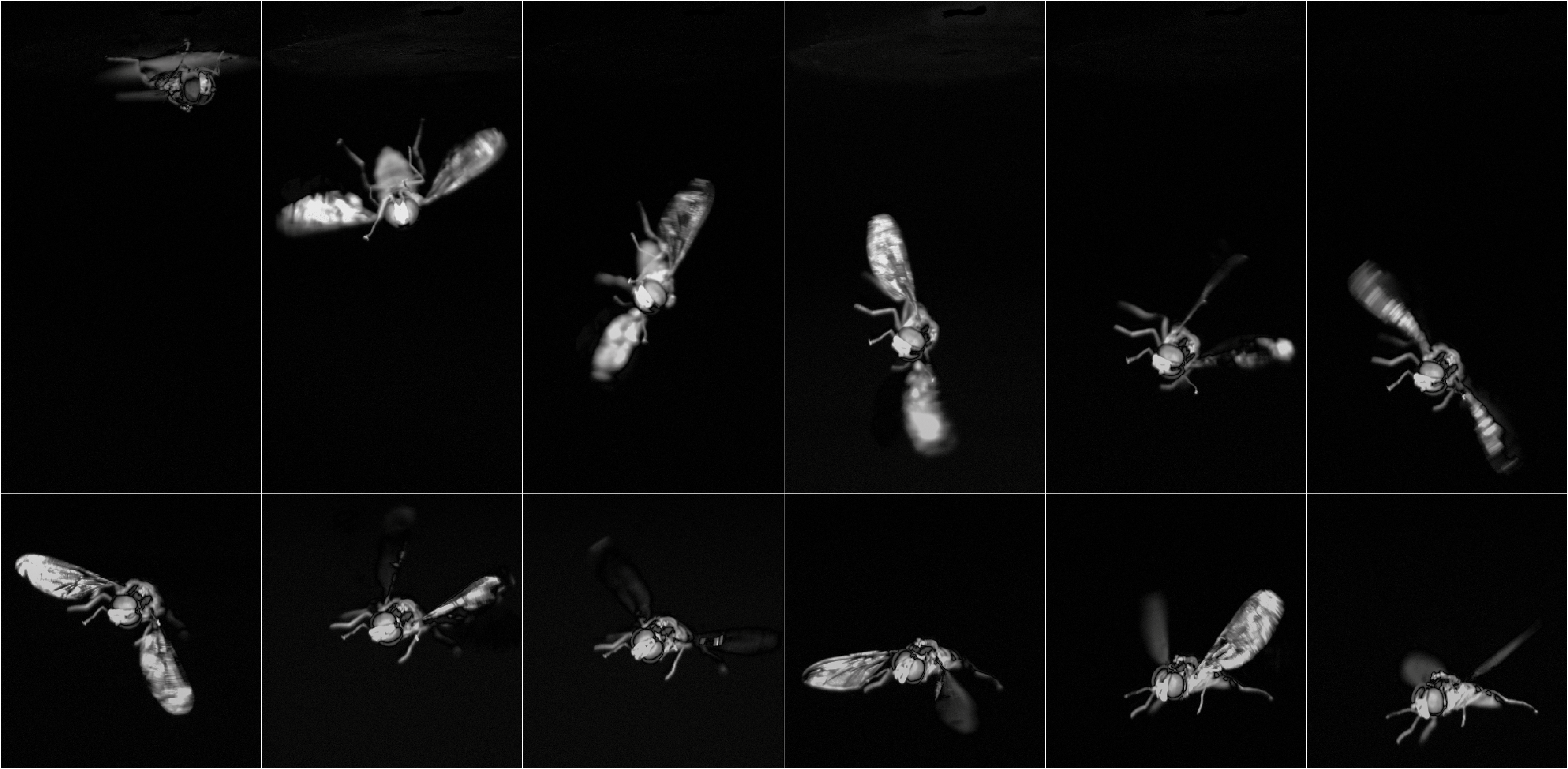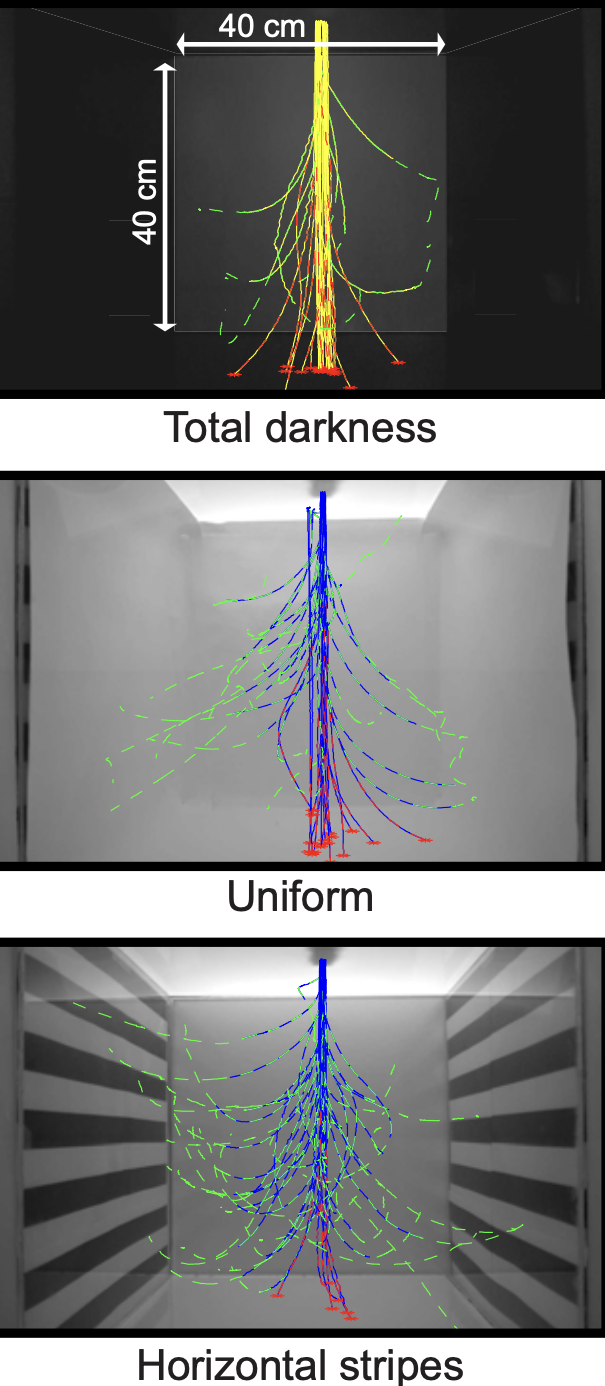Free-fall Hoverfly
Mutli-sensory fusion and verticality perception
Insects’ aptitude to perform hovering, automatic landing and tracking tasks involves accurately controlling their head and body roll and pitch movements, but how this attitude control depends on an internal estimation of gravity orientation is still an open question.
We have been able to simulate free-fall conditions to find out how swiftly the insects responded to the loss of the sensation of gravity and attempted to fly ((Goulard et al., 2016)). In the dark rarely, if ever, hoverflies began beating their wings in time to rescue themselves from a crash. In presence of a stripy wallpaper, the majority of flies triggered flight and avoided a crash within 150 ms of release. Hoverflies clearly have no gravity sensors – accelerometers – and must be relying on the sensation of air flow to rectify their fall, as well their leg proprioception and vision.
Therefore two questions arise: how is the verticality represented in terms of sensori modlities? How are the various modalities merged to obtain a robust verticality perception?
A first hypothesis is that during the long evolutionary history of insect flight, the brightest part of the visual field has been the sky and the darkest is the ground, and thus it makes a robust indicator of which way is up (see Why flying insects gather at artificial light ). In this paradigm, hoverflies’ flight stabilization strategies were investigated ((Goulard et al., 2018)) here for the first time under two different positions of the light source (overhead and bottom lighting). The crash rates were higher in bottom lighting conditions than with top lighting.
Then, we moved to a new paradigm where hoverflies taking off from a sloping surface have to reorient themselves dorsoventrally and stabilize their body by actively controlling their flapping wings ((Verbe et al., 2020)). We observed for the first time that hoverfly reorientation is entirely achieved within 6 wingbeats (48.8 ms).
Finally, we studied how falling hoverflies use sensory cues to trigger appropriate roll righting behavior ((Verbe et al., 2023)). Before being released in a free fall, flies were placed upside-down with their legs contacting the substrate. The prior leg proprioceptive information about their initial orientation sufficed for the flies to right themselves properly. Surprisingly, in one of the experimental conditions tested, hoverflies flew upside-down while still actively flapping their wings.
However, the way hoverflies merge the sensory cues remains an open question. We are moving now to a new experimental setup that will place the fly in a free-fall condition without any prior information provided by the leg proprioception.

You can also put regular text between your rows of images. Say you wanted to write a little bit about your project before you posted the rest of the images. You describe how you toiled, sweated, bled for your project, and then… you reveal its glory in the next row of images.

References
2023
-
Sensory fusion in the hoverfly righting reflexScientific Reports, 2023
2020
-
How do hoverflies use their righting reflex?Journal of Experimental Biology, 2020
2018
-
Role of the light source position in freely falling hoverflies’ stabilization performancesBiology letters, 2018
2016
-
To crash or not to crash: how do hoverflies cope with free-fall situations and weightlessness?Journal of Experimental Biology, 2016